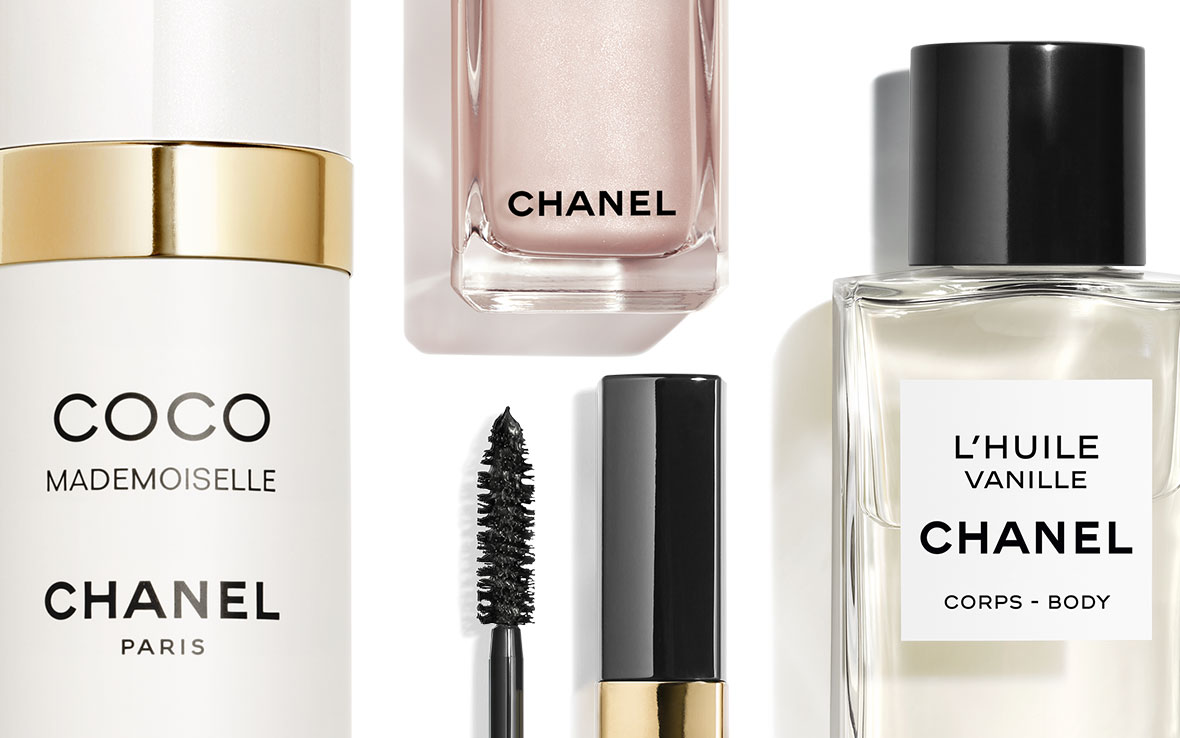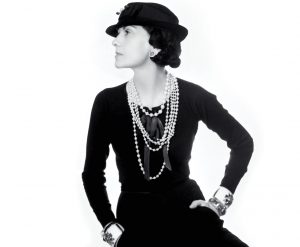
Singularly Coco
The House of Chanel controls every detail for global launches of classic and refined packages.
Published
15 years agoon
By
BXP Staff
THE SPIRIT AND INSPIRATION of Chanel founder Gabrielle Bonheur “Coco” Chanel lives on today in the company’s two “headquarters”—Paris and New York City. Of course, the elegant and timeless designs carrying the weighty Chanel tradition still originate in Paris from the creative team led by Chanel veteran Jacques Alain Helleu, creative director for Chanel worldwide. However, the teams responsible for bringing those uncompromising designs into reality work in concert in Paris and New York to guarantee a singular Chanel experience across the globe.
This September, the HBA Global Expo will award its “Packaging Executive of the Year” award to Scott Widro, v.p. of materials management and manufacturing, Chanel. Widro’s counterpart in Paris is Michel Dupuis, senior v.p. of package development in the Paris headquarters. The secret to Chanel’s package design success is having long-term relationships with a relatively small number of suppliers and converters and having close control on every aspect of product and package production.

Founder Coco Chanel embodied the company essence — “simple but elegant at the same time”.
For instance, global launches are truly global launches of a singularly consistent product and package, coordinated to appear nearly simultaneously around the world. Dupuis says the Chanel packaging department operates under a kind of motto: “We have one product for one world.”
The Chanel experience
As one would expect from a leading haute couture brand, consumer expectations of Chanel is no less than perfect quality. Widro asks rhetorically: “How do we separate ourselves from the rest of the pack? That’s quality.” Chanel is still a privately held company that prides itself on the all-natural ingredients of its products, the purity of design and materials, and the dedication to stay true to the Chanel tradition.
AdvertisementThe consistency is the product and packaging is the primary goal, and Chanel is the only fashion company that owns and operates its own perfume manufacturing facilities, creates its own perfume concentr&eacut;e, and even selectively purchases the crops for the perfume ingredients.
“It’s one of those iconic brands,” says Widro, whose resume also includes eight years at Estée Lauder and five years at Calvin Klein. Widro joined the company in 1993 and was happy to experience Chanel’s late-’90s surge in activity. The pressure to stay at the leading edge is constant, and the last few years have seen a concerted effort to take it up another notch or two. Chanel kicked off their recent resurgence with a record-setting three-minute TV spot/movie starring the latest No. 5 brand representative, Nicole Kidman, and directed by Moulin Rouge director Baz Luhrmann.
Dupuis says that as leading company, their eyes have to be wide open. “Chanel has a very sharp vision of where they want to move the brand,” says Dupuis. Sometimes, that’s certainly against the mainstream.
Complete consistency
One of Chanel’s secrets to success is their desire to partner with their packaging suppliers and forge long-term relationships. This year, Chanel held their sixth annual supplier symposium in Paris, where the company makes their current and future expectations clear. “We always try, as the French say, to be as ‘transparent’ as possible,” says Widro.
“We have globalized the process,” Widro continues. “From a quality standpoint, it makes a lot of sense.” For instance, Widro believes there is no reason to waste effort developing more than one set of tooling for the entire world. This philosophy started in manufacturing, but has bled upstream into packaging, marketing, and advertising. Widro believes it promotes and maintains the highest level of quality—and most consistent message—across the board.
Dupuis emphasizes that the key to consistent quality is keeping the same sources for materials, suppliers, converters, and design. Dupuis explains that they reach out to their suppliers and try to understand the way they do business. “They have a high contribution to the success of the brand,” admits Dupuis. At the annual symposium, Dupuis says that the suppliers like what Chanel is doing and say that Chanel is the only company they know of that operates this way.
AdvertisementThe essence of the brand
“We try to keep it simple and but elegant at the same time,” says Widro. “There are not a lot of colors in the Chanel world.” Aside from making the black as deeply black as possible, the Chanel palette rarely strays far from white, gold, beige, silver, and pink. Coco Chanel was definitely not a fan of heavy decoration, and believed that black and white, straight lines, and rectangular designs represented purity.
But Dupuis says simplicity is not always as easy as it looks. “It’s very difficult to make something very simple, because small imperfections are more easily noticed.” So tight quality control is essential for a pure glass, pure label, and pure product inside. Consumers may be surprised that the familiar smooth white label for the flagship No. 5 perfume package is not merely white nor merely smooth. A single supplier with a unique paper has kept the elegant label a consistent bright ivory shade with a subtle bumpy texture.
Of course, the exceptions prove the rule. Recent releases by Chanel have experimented with new shapes, colors, and materials. The new Chance women’s perfume comes in a pink box and a circular bottle. The new line of Rouge Allure lipstick comes in a black lacquered case that hides a lipstick applicator in shiny gold. For both a visual and sensual experience, the components are aluminum, and the case opens and closes with a spring-loaded click of the thumb.
Sealing the deal
Dupuis says that design inspiration in Paris still goes back to the overall “Story of Chanel,” and designers seek inspiration from the inspiration of Coco Chanel. He says the creative department plays with a great variety of materials, but always with an incredible sense of the detail.
Widro and Dupuis join in the Chanel ethos for continuous improvement, trying to move this brand “further on top.” The active dialogue between design and package development is necessary for global launches of the highest quality and highest consistency. “We need to adopt these ideas to the real world,” says Dupuis, pointing to specific Chanel design strategies.
For instance, when a customer opens up a Chanel box, they see the product right away so they can experience it immediately. “Does it really matter?” asks Widro. “Yes, it really does.” Similarly, every compact comes in a velvet pouch. “The experience of opening it up and saying ‘wow’ is what we want,” Widro says. “We talk about the experience a lot.”
AdvertisementNot only does Chanel want consumers to have a singular experience when opening and using a Chanel package and product, they want them to have that same experience 10 years later and after many interactions with the package. In order to have that same fresh, new experience 10 years later, Chanel packages require purer materials, more durable labels, and more permanent coatings.
Under a lid, there may be a diagram to show how to use the product or makeup tips. Color makeup products have a label on the bottom with a spot of color that matches the product inside. The important difference for Chanel is making the instructions, makeup tips, or color-matched label last the life of the product. “To the consumer, it really matters,” says Widro.
Accessible elegance?
Chanel, in the end, is a fashion company first and foremost. The company mission statement is: “The ultimate house of luxury now and forever.” Widro explains that the focus of the company has never really changed. Chanel is an exclusive brand that everyone aspires to and everyone wants to touch.
Sometimes, however, the Chanel designers have to strike a balance between exclusivity and accessibility. “When you want to be on the top, it’s difficult to have something for everyone,” admits Dupuis. The reality today is that to keep their place in the luxury universe, elite brands also have to increase sales numbers in more accessible categories, like makeup and skin care, in a few select regions. Luxury companies like Chanel are looking to emerging markets like China and Russia to balance out the high-end offerings in the West.
Regardless, customers purchasing a Chanel product at a department store in Austria, Australia, or Austin are getting the same exact Chanel experience in both product and package. When a potential customer enters a department store, they are expecting a specific kind of Chanel experience.
“We are a gift-giving business,” says Widro. “People still love to give No. 5.” When there’s a Chanel limited edition, though, it’s a true limited edition with 10,000 units or fewer. Each piece of the Chanel brand has its own product presentation and package design strategy, but nothing at Chanel is ever gimmicky. Widro says the goal is to combine product and package, and come up with a singular thought.
Chanel has made a concerted effort over the last two years to make the experience at the Chanel makeup counter a thoroughly enjoyable one from beginning to end, and consistent across the globe. Dupuis says the counter display areas have been redesigned to be more approachable and to create a specific atmosphere. “Merchandising is like theater,” Dupuis explains. “The first contact with the brand is the package. You need to have everything together.”

BXP elevates the value of innovative and collaborative brand package design as a strategic business competence across the omni-channel path to purchase, to ultimately help consumer facing and retail brands deliver more relevant experiences that connect with shoppers, win at shelf, own the moment of sale and maximize brand loyalty.
SPONSORED VIDEO
Branding with Ferocity – Thinking Like an Indie Brand
Get a better understanding on how to leverage new technologies to engage and delight shoppers, sustainability’s role in product and package design – being sustainable and premium are not mutually exclusive, plus best practices and tips for collaboration and how to launch new products and refresh existing product line-ups and brands.
You may like
Advertisement

GO MINIMALISM . . . HOLD ON A MINUTE!
Sustainable, 100% Recycled Transparent Sheeting is Now a Reality!

Kroger, Walgreens to Dedicate Section of Their Stores to Reusable Packaging

6 Marketing Tips for Ecommerce Brands to Win the Holiday Shopping Season

New Wunderoots Branding Celebrates the Carrot

Fact or Fiction? The Truth about Eco-Friendly Packaging

BXP May 2021 Think & Clink

Unilever Raises Bar for Accessibility with Degree Inclusive

Crown Royal’s Limited-Edition Pack Designed by Oscar-Winner

Coca-Cola Explores World of Paper Bottles
Subscribe

BULLETINS
Get the most important news and business
ideas from BXP Magazine's news bulletin.
Latest Tweets
Advertisement


